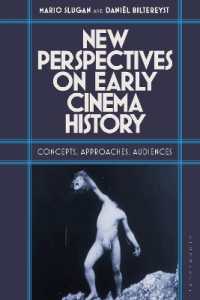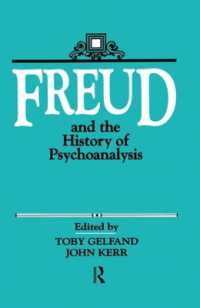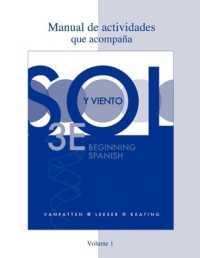Full Description
By providing a variety of strategies, scenarios, examples of student writing, classroom video clips from across all science content areas, rubrics, and guidelines for designing assessment items, Supporting Grade 5-8 Students in Constructing Explanations in Science: The Claim, Evidence, and Reasoning Framework for Talk and Writing provides teachers with the tools to successfully incorporate scientific explanation in their own classrooms.
Grounded in NSF-funded research, this book/DVD supports middle grades science teachers with an instructional framework that breaks down the complex practice of scientific explanation into four components-claim, evidence, reasoning, and rebuttal-and providesconcrete examples of what this scientific inquiry practice looks like when it is successfully implemented in real classrooms. Over the last nine years that McNeill and Krajcik have developed, field tested, and refined this instructional model, they found that incorporating this framework for scientific explanation into curriculum materials, teacher instructional strategies, and assessments enhances students conceptual understanding and improves their ability to think and communicate more scientifically by carefully analyzing evidence and backing up their claims.
Facilitator's Guide Package for Science Coaches and Staff Development Trainers
Take the guess work out of leading professional development and book studies with the Facilitator's Guide and Book Package. To order, use Special ISBN: 9780132549400 and contact your sales representative at www.allynbaconmerrill.com/findmyrep.
What Educators Are Saying
I would encourage others to use it as a resource for a professional learning community or department discussion group and the like... absolutely I would recommend it - why? it is simply good for our students' developing understanding of science..."
- Pamela M. Pelletier, Senior Program Director, Science K-12, Boston Public Schools, Boston, Massachusetts
"[This book] can easily be used to guide middle school teams to collaboratively work together to ask higher order thinking questions in any core content area. This type of questioning leads to great classroom discourse, therefore engaging students in using claims, evidence, and reasoning."
- Kendra Walters Durham, Science Teacher, Wester Middle School, Frisco, Texas
Take a Look Inside
Integrates video clips from a range of grade levels and contexts (e.g., urban and suburban) throughout the text to demonstrate the use of the scientific explanation framework in actual classrooms (Chapters 2, 4 and 7)
Provides examples of student work throughout the book to demonstrate student accomplishment and to illustrate the most common student difficulties and strategies for supporting those challenges. (Chapters 1, 2, 3, and 6)
Incorporates learning strategies that can support all students, including English Language Learners and students with special needs, and helps teachers with ideas on how to modify instruction to best meet the needs of their students.
Presents rubrics for evaluating students' written explanations and sample assessment tasks with model teacher critiques of student explanations based on developed rubric.
Professional Learning Communities
Save when you purchase 10 books or more! To order, use Special ISBN: 9780132752022 and contact your sales representative at www.allynbaconmerrill.com/findmyrep.
Contents
Chapter 1: Importance of Supporting Students in Scientific Explanation
1.1. The role of explanations in science
1.2. Scientific explanations in the classroom
1.3. Benefits of scientific explanations
1.4. Alignment with the national science standards
1.5. Student challenges with scientific explanations
1.6. Check Point
1.7. Study Group Questions
Chapter 2: Framework for Constructing Scientific Explanations
2.1. Students' understandings of scientific explanations
2.2. Framework for constructing scientific explanations
2.3. Video Example - Introducing the instructional framework
2.4. Examples of scientific explanations
2.5. Increasing the complexity of the framework over time
2.6. Benefits of the framework for all learners
2.7. Check Point
2.8. Study Group Questions
Chapter 3: Designing Learning Tasks for Your Science Curriculum
3.1. Considerations for designing learning tasks
3.2. Step 1: Identify opportunities in the curriculum
3.3. Examples of learning tasks
3.4. Step 2: Design complexity of the learning task
3.5. Step 3: Create Classroom Support
3.6. Check Point
3.7. Study Group Questions
Chapter 4: Teaching Strategies to Integrate into Classroom Instruction
4.1. Teaching strategies
4.2. Supporting all learners
4.3. Check Point
4.4. Study Group Questions
Chapter 5: Developing Assessment Tasks and Rubrics
5.1. Overview of the development process
5.2. Step 1: Identify and unpack the content standard
5.3. Step 2: Select scientific explanation level of complexity
5.4. Step 3: Create learning performances
5.5. Step 4: Write the assessment task
5.6. Step 5: Review the assessment task
5.7. Step 6: Develop specific rubric
5.8. Check Point
5.9. Study Group Questions
Chapter 6: Using Rubrics and Student Data to Inform Instruction
6.1. Role of assessment in creating a supportive learning environment
6.2. Using rubrics to support student learning
6.3. Providing students with feedback
6.4. Check Point
6.5. Study Group Questions
Chapter 7: Supporting Learning Over Time
7.1. Developing a classroom culture
7.2. A learning progression for scientific explanation
7.3. Connecting to other content areas
7.4. Check Point
7.5. Study Group Questions








